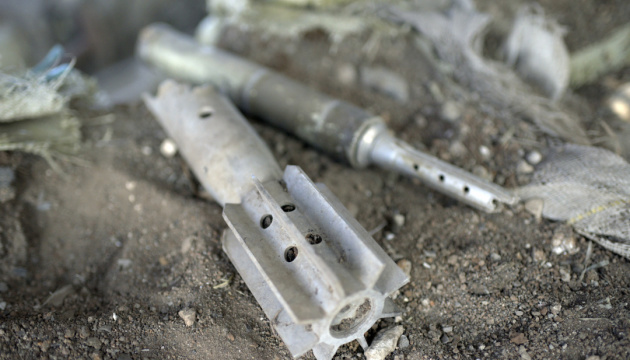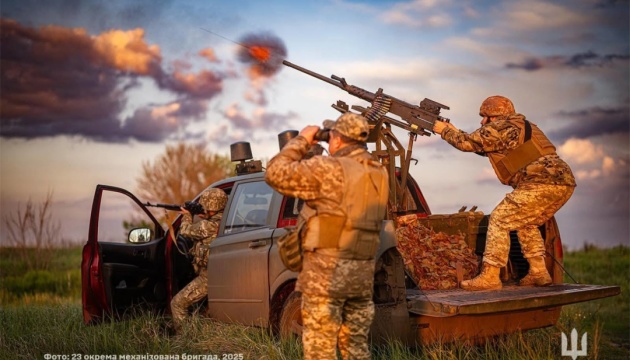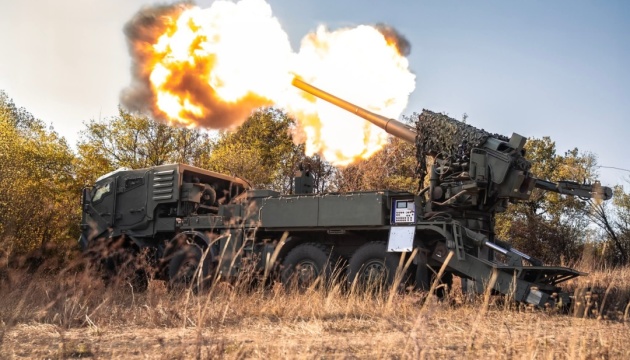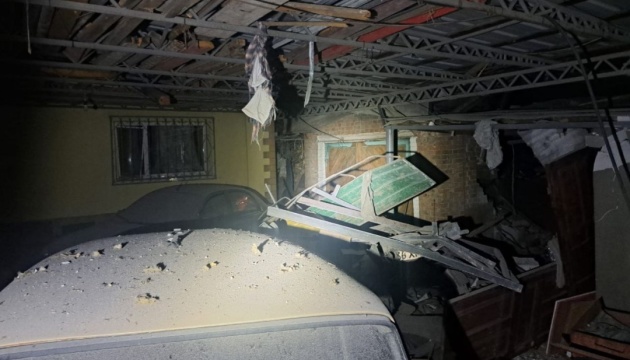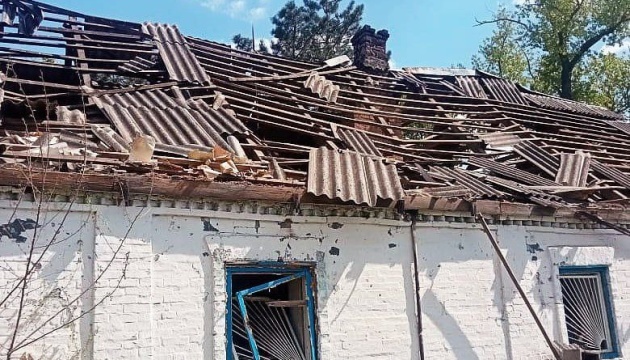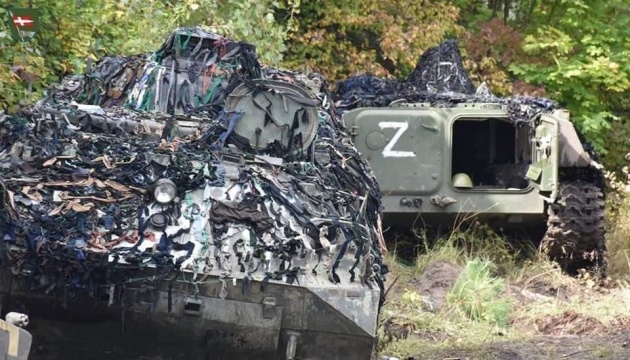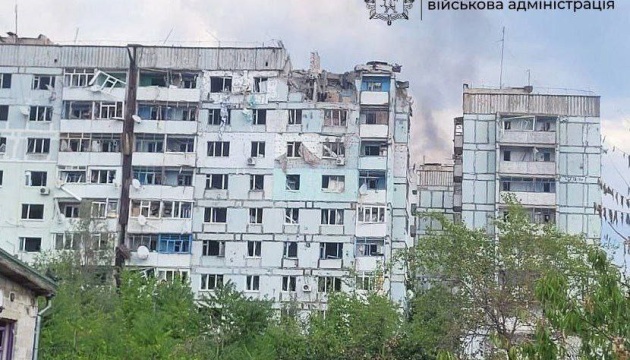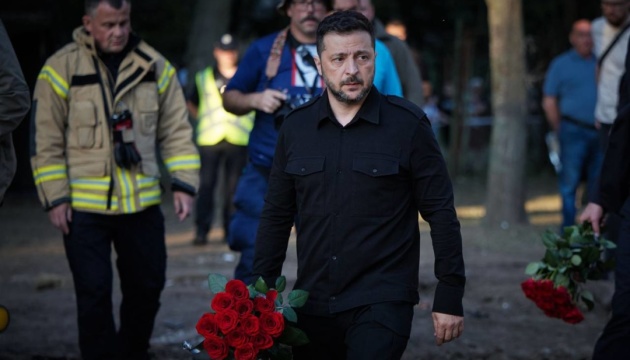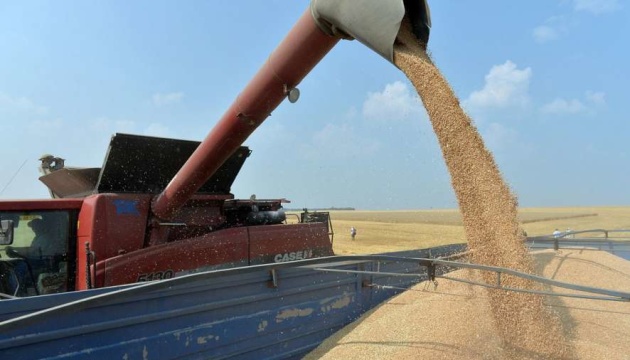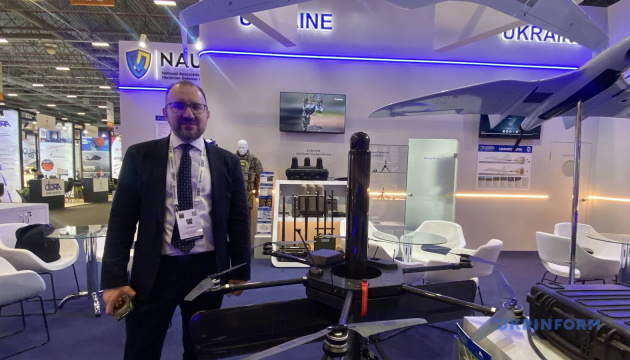Ukrainian Navy confirms damage to Russian nuclear submarine base in Kamchatka
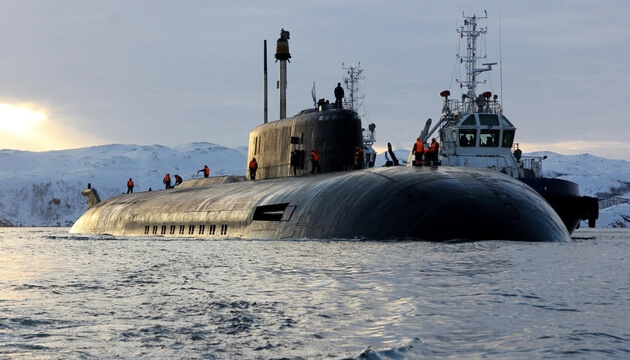


Russia will maintain stability even as its president’s health declines. Even if Vladimir Putin leaves office, Russia’s power structure will not undergo significant changes because it is built as a strong system ensuring regime continuity, Kyrylo Budanov, Ukraine’s Defense Intelligence chief, told TV presenter Natalia Moseichuk.
This means that the Kremlin’s political and military strategy will remain unchanged, and the war in Ukraine and threats to Europe and other countries will also persist.
Budanov said that Putin’s physical condition is significantly worse than the power system he created.
“No, his health is worse than his system. But with the leader’s departure, nothing will change there,” Budanov explained.
He added that Russia has prepared the system so that Putin’s successor, whoever it may be, will operate within the same paradigm with only minor adjustments.
Budanov emphasized that Russia’s system is a rigid and entrenched regime, similar to North Korea’s, where power transfers occur within a strict structure that prevents evolutionary change.
“A totalitarian regime falls but does not change gradually,” he said, citing Kim Il Sung and Kim Jong Un as examples of such system durability and strength.
Budanov also noted that in talks with Russian prisoners, he saw a generation of people who cannot imagine life other than under Putin’s regime. They grew up and live within this system, and many have already died for it.
“For us, unfortunately, this means the system is quite strong and will last a long time,” he concluded.
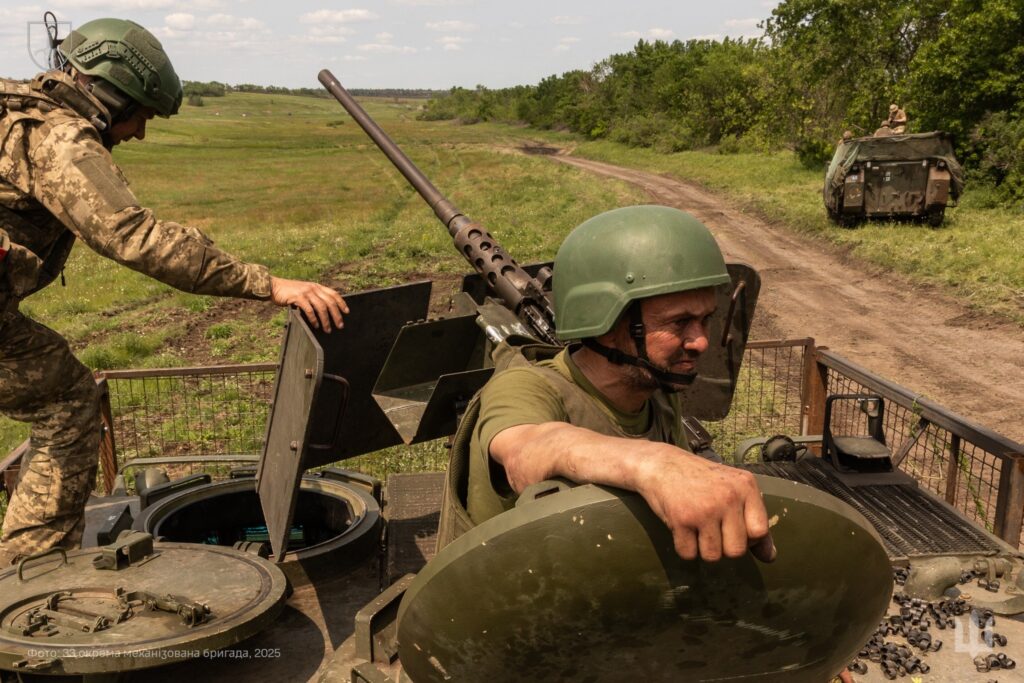
Russian soldiers from the 247th Air Assault Regiment in the temporarily occupied part of Zaporizhzhia Oblast are deserting en masse, according to Atesh, the Crimean-Ukrainian partisan movement.
The Atesh partisan movement was formed in 2022 as a joint initiative of Crimean Tatars and Ukrainians after Russia’s full-scale invasion. It claims to have a network of saboteurs inside the Russian army and has created an online course for Russian soldiers teaching them how to sabotage their own equipment. In February 2023, Atesh reported that over 4,000 Russians had taken the course.
According to its reports, the highest number of desertions is occurring in one particular battalion of the regiment. The main reason is the forced conscription of residents from occupied territories, particularly Kherson, Zaporizhzhia, and Crimea.
“Lawlessness, incompetent command, refusal to register reports, intimidation, and constant front-line losses only fuel the desire to flee,“ notes Atesh.
This is not an isolated incident. Earlier, Russia’s Defense Ministry sent a commission to the 1196th Motorized Rifle Regiment stationed in occupied Kherson Oblast. The reason? Soldier suicides and sabotage of watercraft. All of this signals demoralization and disintegration within the occupying forces.
The desertion of those forcibly mobilized from occupied areas once again proves: Russia doesn’t view residents of Kherson, Zaporizhzhia, or Crimea as its citizens, but as cannon fodder.
Locals are conscripted by force, without basic rights — no contracts, no legal status, no rotations.
Wounds aren’t documented, discharges are ignored, and complaints lead to persecution. At the same time, occupied territories are being turned into military bases for further aggression against Ukraine.
As of August 2025, Russia controls about 60% of Zaporizhzhia Oblast. Major occupied towns include Melitopol, Berdiansk, Tokmak, and Enerhodar.
The Zaporizhzhia Nuclear Power Plant in Enerhodar poses the largest nuclear threat in Europe. Russia has mined the facility, uses it as cover for shelling, and deploys troops there.

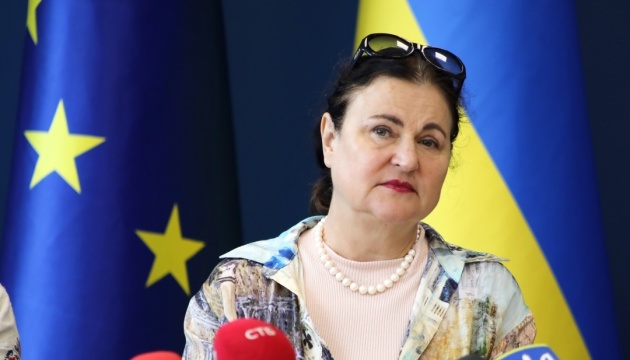

Moscow is blocking the organization’s work, which was supposed to monitor its war crimes in Ukraine. Ukrainian Foreign Minister Andrii Sybiha states that Russia should no longer be a member of the Organization for Security and Cooperation in Europe (OSCE), UkrInform reports.
According to him, Moscow is obstructing the OSCE’s activities because the organization’s mission was to document numerous violations of international law, including Russia’s war crimes.
“A country that has violated all ten fundamental principles of the Helsinki Act should not hold a place in this organization,” Sybiha emphasizes.
The Helsinki Act of 1975 is not a legally binding treaty but a political document containing key norms of international law that form the basis of European security. The ten principles include:
Russia has systematically violated these principles since annexing Crimea in 2014, conducting the war in Donbas, and, since 2022, waging all-out war. These violations include illegal use of force, breaches of Ukraine’s territorial integrity, interference in internal affairs, and gross human rights abuses, including war crimes.
Sybiha reminds that the OSCE was created in very different geopolitical circumstances during the Cold War, but today, Russia has turned the organization into a tool for advancing its own interests.
In 2022, Russia blocked the extension of the mandate of the OSCE Special Monitoring Mission in Ukraine, which had previously operated in Donbas. Since then, the OSCE supports Ukraine through other programs but without a direct presence in combat areas.
“It cannot be that one country blocks the work of the entire organization, which aims to enhance security. Russia is the main cause of instability in Europe,” the minister stresses.
Ukraine insists on reforming the OSCE and expelling the aggressor country from its membership to restore the organization’s trust and effectiveness.
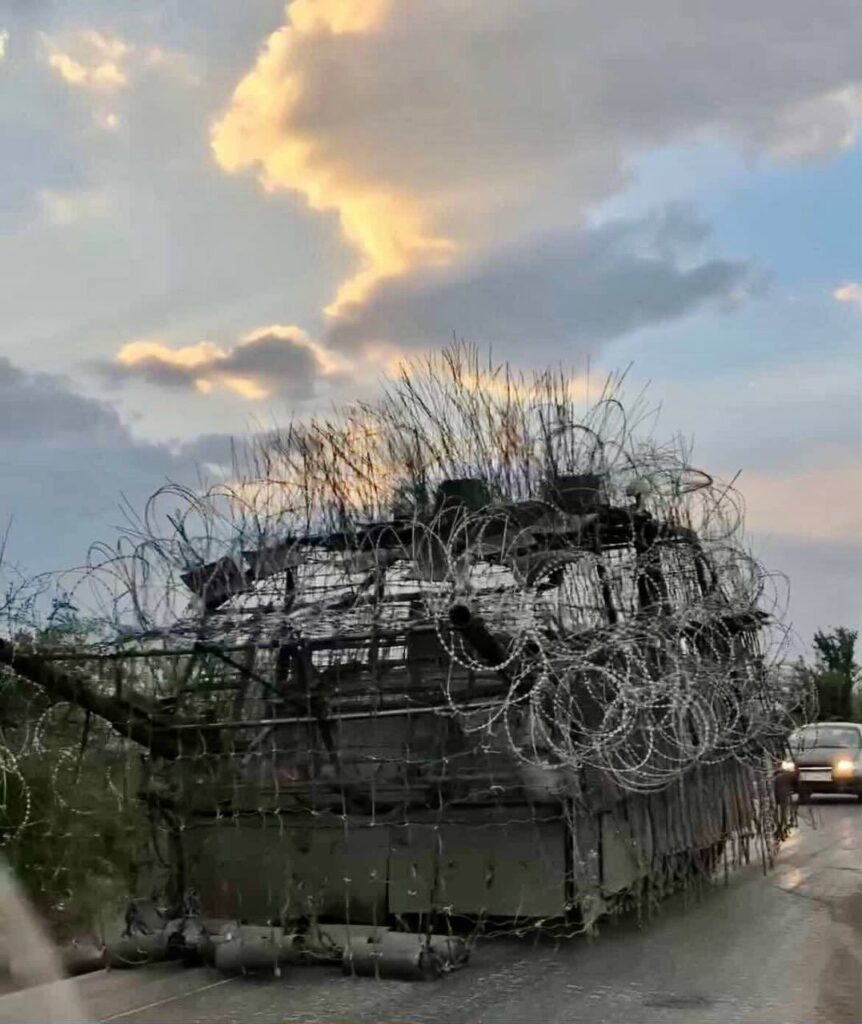
The bulky, lumber vehicle boasts the qualities of Russia’s “turtle tanks” as well as the qualities of its more recent “porcupine tanks.” That is: layers of shell-like metal sheeting and, atop that, metal quills that project outward.
The quills help to detonate incoming first-person-view drones before they strike the tank itself. The plating blunts the impact of any drones that get through.
As ugly and ungainly as the hybrid turtle-porcupine tank is, it might actually work under the right circumstances. Examples abound of up-armored vehicles absorbing dozens or even scores of FPVs, which normally weigh just a few pounds and lack explosive power.
If there’s a downside to all this add-on armor, it’s that it almost certainly impedes the vehicle’s mobility by heaping weight onto its original 40- or 50-ton chassis. The extra protection surely also obstructs the driver’s visibility—and probably makes it extremely difficult for the three crew and any infantry passengers to climb onto and off of the vehicle.
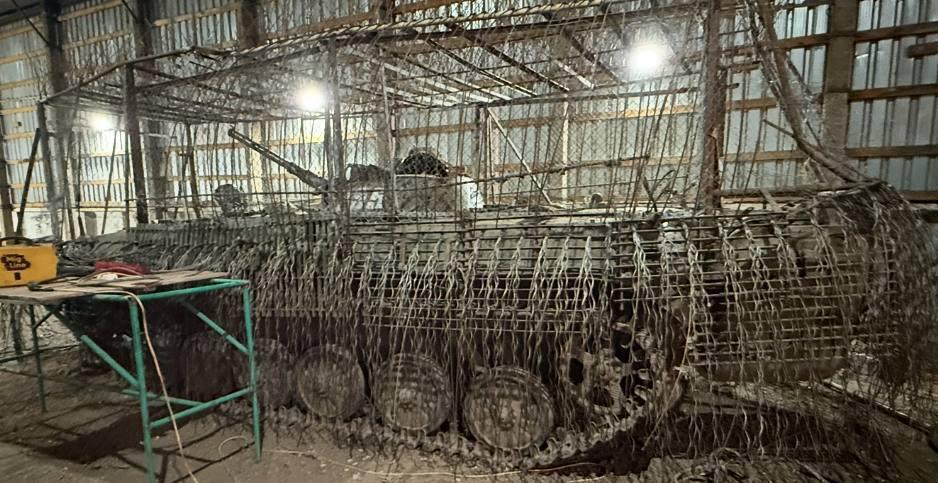
This dismount speed can be a matter of life and death when an up-armored tank comes under attack—and any passengers need to get off the vehicle and spread out.
One Russian “porcupine tank”—one of two involved in an assault on Ukrainian defenses outside the ruins of Toretsk, in eastern Ukraine’s Donetsk Oblast, on or before 9 July—survived more than 70 drone strikes before finally succumbing. “It was very difficult to find a weak spot,” the Ukrainian Deep State analysis group noted.
And yes, the infantry riding on that tank and other vehicles struggled to dismount as Ukrainian drones rained down. “After several hits, the tanks tried to disperse along the forest belts to safely land the infantry among the greenery,” the Ukrainian army’s 28th Mechanized Brigade reported. “In the end, there was almost no one to land. And those who still managed to escape … were eliminated.”
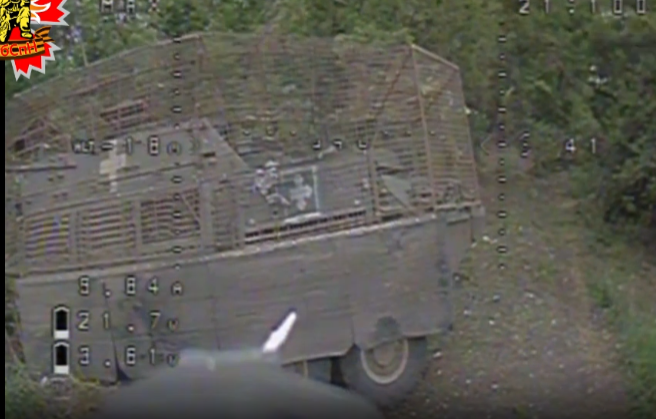
Ukrainian forces have deployed their own super-armored vehicles, albeit with a different armor mix. Open-source analyst Andrew Perpetua recently noted the latest example of a drone-proof Ukrainian vehicle—potentially an American-made Stryker wheeled fighting vehicle.
“There was a Russian video attacking a Ukrainian Stryker that Ukraine turned into an invincible tank,” Perpetua observed. “This Stryker ate every single … drone Russia sent at it without even taking a scratch.”
“The armor plan was this,” Perpetua added. “You take a Stryker with the slat armor on top. On top of the slat armor you apply a thick layer of rubber. All over. Whole vehicle is now rubber. Then, take slat armor and put that over the rubber.”
“It went: Stryker, slat, rubber, slat.”
The downside, as always, is all the extra weight on top of the 19-ton basic vehicle. “This had to be the heaviest … Stryker to ever stryke,” Perpetua quipped.
To be clear, the base vehicle may not have been an 11-person Stryker, Perpetua conceded. It may have been a Soviet-style BTR weighing 18 tons and accommodating 10. In any event, “that little porker probably weighs as much as a [69-ton, four-person M-1] Abrams [tank]. But it ate drones like no tomorrow.”
Of course, add-on armor is no panacea. Yes, the most heavily up-armored vehicles stand a decent chance of surviving a few—or even a lot—of drone strikes. Most vehicles remain extremely vulnerable not just to drones, but to all the myriad dangers along the front line. Mines. Artillery. Missiles.
It’s not for no reason that the Russians have parked most of their surviving vehicles—and now mostly attack on foot or on motorcycles. Under the cover of drones, of course. Meanwhile, the Ukrainians usually defend with infantry sheltering in trenches. Also under the cover of drones.
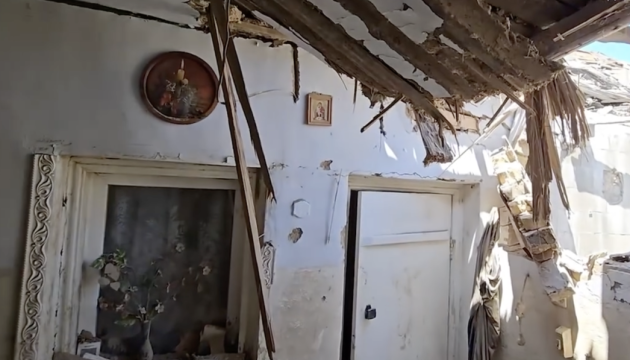
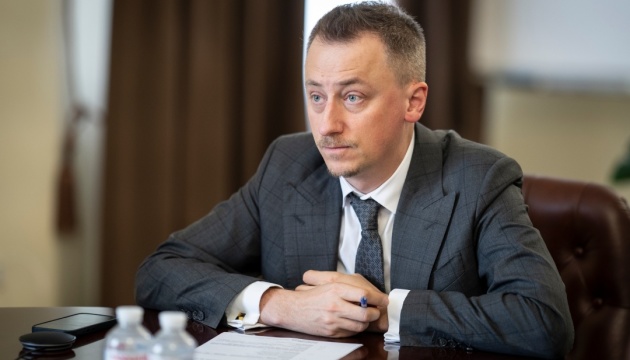
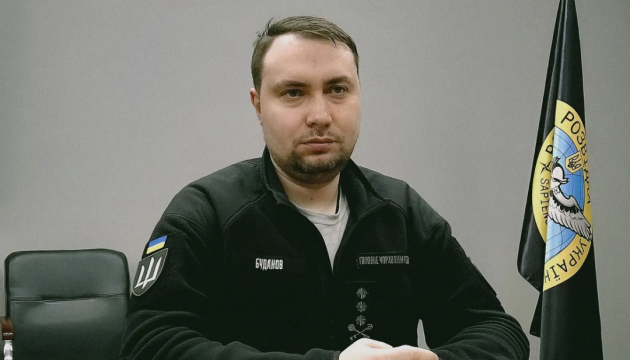
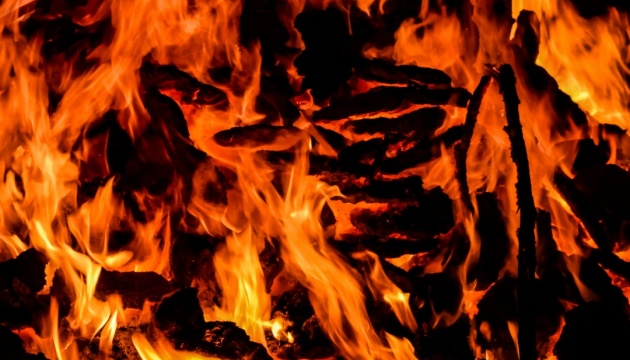

The Russian military has been throwing troops at the Toretsk direction for over six months, but each time they are crushed by Ukrainian defenses. Russians have lost about 50,000 soldiers on this front, with more than 20,000 irreversible casualties, Army TV reports.
“50,000 people — that’s a good-sized European stadium filled to the brim. But the Kremlin regime didn’t bring these people for football. It brought them to die near Toretsk,” Major Serhii Khominsky, Ukrainian press officer of the 100th Separate Mechanized Brigade, says.
Khominsky stresses that the 100th Brigade has held this crucial front line for over a year. Despite repeated Russian attempts to break through from Horlivka toward Kostyantynivka, they have only reached the outskirts of Toretsk and failed to advance further.
“This is one of the front sectors where the enemy has made the least progress. It frustrates them, but they can’t change anything — thanks to the heroism of our fighters,” he emphasizes.
Ukrainian defenders have faced nearly every form of Russian tactics here: from massive armored assaults to nighttime infantry storm attacks.
“You could say the only things we haven’t seen are battle kangaroos and penguins. Everything else has been tried,” Khominsky adds with bitter irony.
The officer also reveals that Russia has started using ground robotic combat systems. However, these machines proved nearly powerless in the devastated urban environment.
“High-rise buildings turned into thousands of tons of rubble. These ruins are hard to pass even for a human, let alone a robotic system,” Khominsky explains.

Thanks to your incredible support, we’ve raised 70% of our funding goal to launch a platform connecting Ukraine’s defense tech with the world – David vs. Goliath defense blog. It will support Ukrainian engineers who are creating innovative battlefield solutions and we are inviting you to join us on the journey.
Our platform will showcase the Ukrainian defense tech underdogs who are Ukraine’s hope to win in the war against Russia, giving them the much-needed visibility to connect them with crucial expertise, funding, and international support.
We’re one final push away from making this platform a reality.
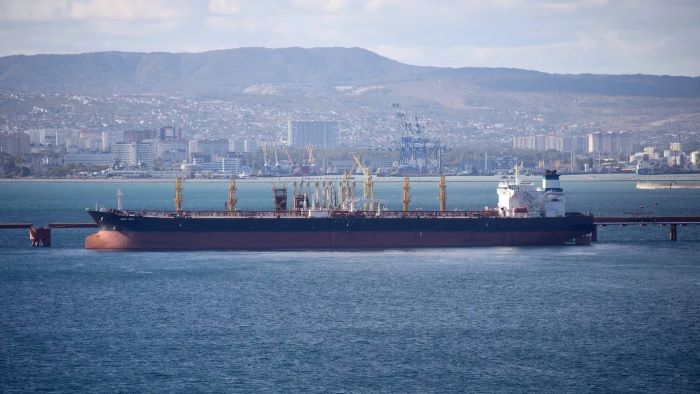
Europe has a chance to strike at the Kremlin’s lifelines, if it dares to act. Around 70% of the “shadow fleet” transporting Russian oil sails through the Baltic Sea, said Ukrainian Deputy Foreign Minister Andrii Sybiha at a joint press conference with Polish Foreign Minister Radosław Sikorski, UkrInform reports.
The Russian “shadow fleet” consists of grey-market tankers that evade international sanctions. These tankers often sail with transponders turned off, without proper insurance, and conceal their identities. This fleet channels Russian oil exports to China, India, and Global South countries, helping Moscow fund its war. Shutting down this corridor, through port controls and insurance restrictions, could deal a serious blow to the Kremlin’s energy revenues.
“Let me remind you that about 70% of the shadow fleet that transports Russian oil passes through the Baltic Sea. There’s still untapped potential here, in my view, among our European partners — particularly the Baltic Sea states,” Sybiha emphasized.
Sybiha also urged Western partners to impose targeted individual sanctions on Russian officials involved in the abduction of Ukrainian children and unlawful sentences against Ukrainian POWs.
With Poland set to chair the Council of the Baltic Sea States, Sybiha said Warsaw has a chance to spearhead efforts to dismantle the Kremlin’s shadow oil network.
“Now is the time for active diplomacy, pressure, and accountability,” he stressed.
The informal gathering of the Ukrainian and Polish foreign ministers took place at Sikorski’s residence in Kobylniki, in Poland’s Kuyavian-Pomeranian Voivodeship. Discussions covered a wide range of topics, from international support for Ukraine to humanitarian issues and protecting Ukrainian citizens.
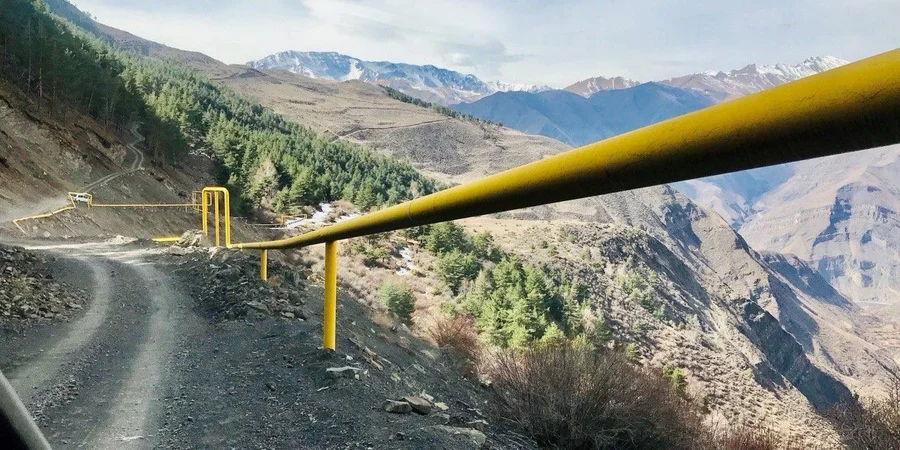
The Central Asia-Centre gas pipeline system has been taken out of service following explosions in Russia’s Volgograd region on 2 August, Ukrainian media hromadske reported, citing a source in law enforcement structures.
The pipeline system, owned by Gazprom, transports natural gas from Turkmenistan through Uzbekistan and Kazakhstan to Russia.
Local residents report that law enforcement agencies and repair crews are present in the area of Dinamovskoye village in the Nekhayevsky district of Volgograd Oblast to eliminate the consequences of the explosion, according to the source.
This pipeline reportedly provides energy to such objects of Russia’s military-industrial complex as Demikhovsky Machine-Building Plant, Russian Aircraft Corporation MiG (production complex No. 1), ammunition manufacturing plant Magnum-K and others.
These complexes are key components of Russia’s military-industrial complex, with the pipeline supplying them reported to provide energy to support their operations.
Representatives of the Russian gas transportation company that supplies the Russian army are currently calculating damages, the report said. Gas transportation through the Central Asia-Centre main pipeline in Volgograd Oblast has been suspended indefinitely.
The report doesn’t specify whether the explosions were caused by a drone attack.
Russian Telegram channels reported explosions and fires at industrial facilities across multiple oblasts during overnight drone attacks on 2 August, with air defense systems activated in several areas.
The Ukrainian Security Service (SBU) confirmed strikes on two targets: a military airfield storing Iranian-made Shahed drones in Primorsko-Akhtarsk, Krasnodar Oblast, and the Elektroprilad plant in Penza. The Ukrainian Armed Forces General Staff confirmed the Penza strike.
The Elektroprilad facility produces military equipment including gear for digital networks in command systems, aviation devices, armored vehicles, ships, and spacecraft, the SBU кузщкеув.

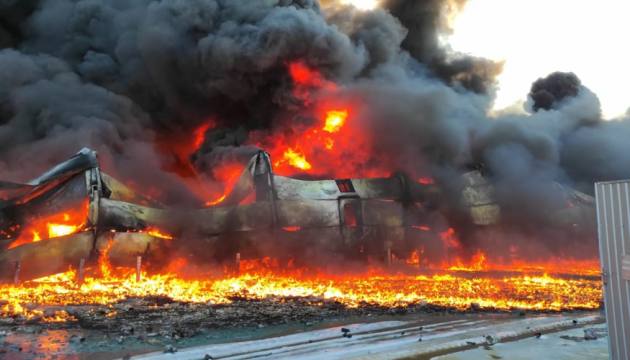

A drone that crossed into Lithuania from Belarus on 28 July has been located at the Gajžiūnai military training ground in Jonava district, the Belarusian service of Radio Free Europe/Radio Liberty reported.
Lithuania’s Defense Minister Dovile Sakaliene confirmed the discovery to the Baltic News Service (BNS).
The unmanned aircraft was discovered more than 100 kilometers from the Belarusian border. The drone resembles the Russian “Gerbera” decoy drone, designed to deceive air defense systems by mimicking the Iranian Shahed combat drone, according to earlier reports.
Military investigators and bomb disposal experts are working at the site where the drone was found.
On the morning of 28 July, Lithuanian police warned citizens about the intrusion of an unidentified unmanned aircraft from Belarusian territory. Darius Buta, chief advisor of the National Crisis Management Center (NKVC), told the news portal Delfi that the drone was detected at an altitude of approximately 200 meters and was last seen near Vilnius.
On 10 July, State Border Service personnel spotted an unknown object in the air flying at approximately 100 meters altitude at 50-60 km/h speed. Within minutes, it crashed near the closed Sumskas checkpoint, about one kilometer from the Belarus border. The object was identified as a Russian “Gerbera” type drone.
On 28 July, Lithuanian police reported detecting an unidentified drone type that entered the country from Belarus territory. Social media footage showing the drone suggests it resembles a Shahed or its Russian imitation “Gerbera,” according to Delfi, though the drone type is still being determined.
Belarus is a key ally of Russia, primarily due to their deep military, political, and economic cooperation. The country allowed Russian troops to use its territory for military operations, including during the 2022 full-scale invasion of Ukraine, and hosts some Russian tactical nuclear weapons.
Lithuania will deploy a Ukrainian-developed acoustic drone detection system starting in 2026, the country’s Armed Forces Commander-in-Chief Raimundas Vaiknoras announced to LRT.
The deployment announcement comes after another incident involving a drone entering Lithuanian airspace. When asked whether Lithuania would have an acoustic drone detection system, Vaiksnoras confirmed that budget funds have already been allocated for purchasing the systems.
According to the Armed Forces chief, testing will be conducted by the end of the year, and next year there will be more intensive implementation of these systems.
“They have been known since last autumn, but procedural issues were somewhat delayed because this is a Ukrainian system, one could say, which had to be adapted to our implementation of American systems due to sensitive issues,” Vaiksnoras said.
The general noted that two drones that flew into Lithuania the day before “are not a coincidence.”
“It seems to me that we sometimes forget that we actually live very close to the combat zone. Belarus is used as a platform for Russia’s attack on Ukraine, so drones moving through our territory are the same thing that Poles, Romanians, and Latvians experience. This situation will not change while Ukraine is under attack by Russia,” the Armed Forces chief added.
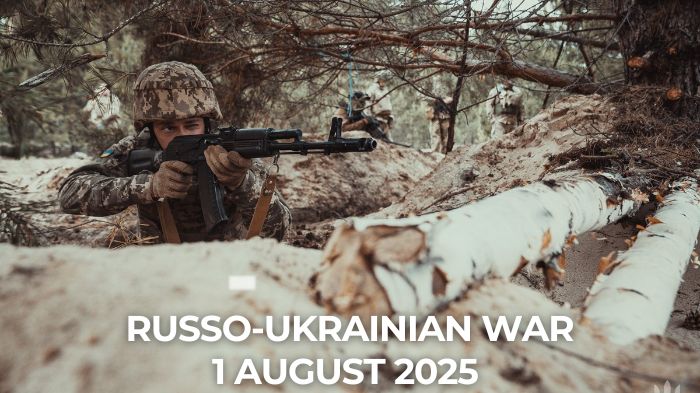
 |
London court does what Kyiv wouldn’t: PrivatBank wins $ 2bn fraud case against oligarchs. A ruling 2,100 km from Ukraine highlights the cost of oligarchic power over national justice systems. |
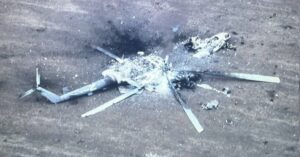 |
Inform Napalm: Hungary joins Kazakhstan in shadow network to repair Russian helicopters. A leaked document shows spare parts flow in secret, bypassing EU restrictions. |
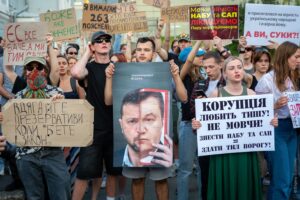 |
Inside Zelenskyy’s failed coup against Ukraine’s anti-corruption agencies. Parliamentary manipulation, fake security crises, and Telegram warfare met Ukrainian teenagers. |
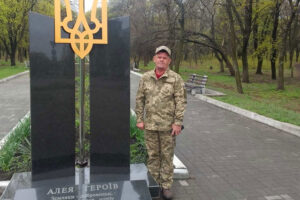 |
Wounded, cut off and alone: Ukrainian grenadier spends three days in Russian positions and brings back a captive. A 54-year-old fighter survived wounds from shrapnel and being knocked unconscious before crossing back with a captured enemy soldier. |
Trump claims Russia has lost nearly 14 times more soldiers than Ukraine in 2025. Russia has lost over 112,500 soldiers since the start of 2025.
Only three of eight Iskander-K missiles were shot down — but why did most slip through Kyiv’s air defenses?. The clock ran out as missiles flew low and fast from the border.
Satellite images show Kamchatka earthquake tears Russia’s submarine stronghold. The pier shifted at a “terrifying angle” as waves crashed into the Pacific Fleet’s dock.
July records 96 Russian drones flying from Ukraine into Belarus, Belsat says
. Belarus airspace saw the heaviest month of Russian drone presence yet.
Ukraine’s Azov member named Europe’s top combat medic after innovative drone rescue. A battlefield transfusion under fire rewrites what’s possible in military medicine.
Russian oil floats in limbo as EU sanctions trap tankers near India. The Achilles and Elyte sit stranded, while pressure mounts on Delhi to choose sides in a wartime economy.
Trump promises new sanctions on Russia, Witkoff heads to Moscow as Senate readies a massive bill
. The envoy will return to Moscow while senators prepare a sweeping package.
Kharkiv bleeds daily under Russian fire as €10 billion in damage leaves 160,000 homeless. The city hasn’t had a single quiet day since 2022.
Ukrainian man, buried alive between floors, stays conscious for hours after Russian Iskander-K strike. Rescuers tunneled through concrete and chaos, keeping voice contact with the trapped man as debris pressed on his chest for hours.
Death toll from yesterday’s Russian air assault on Kyiv reaches 31 with a 2‑year‑old among victims as city mourns. Crews work nonstop in the Sviatoshynskyi district to reach those trapped beneath tons of rubble.
Young Kyiv woman survives 9th-floor fall as Russian missile flattens another high-rise, killing 16
. A missile hurled 23‑year‑old Veronika from her apartment. She lived; her parents were killed in the building collapse.
Ukraine’s government demands lie detector test from its anti-corruption chief candidate. Tsyvinsky passed the tests, won the contest, but now must pass a polygraph.
Putin shrugs off Trump’s ultimatum and says he’s ready to wait until Kyiv agrees to his conditions to end war. His conditions haven’t changed since 2024 — only the body count has.
Kyiv burns in Putin’s calculated act of humiliation against Trump’s peace efforts, says diplomat. As sanctions loom, Russia doubles down on violence, mocking US efforts to end the conflict.
Ukraine cuts inflation forecast to 9.7% despite ongoing war. Country defies economic patterns typically seen in countries fighting for survival
Read our earlier daily review here.
You could close this page. Or you could join our community and help us produce more materials like this.
We keep our reporting open and accessible to everyone because we believe in the power of free information. This is why our small, cost-effective team depends on the support of readers like you to bring deliver timely news, quality analysis, and on-the-ground reports about Russia's war against Ukraine and Ukraine's struggle to build a democratic society.
Become a patron or see other ways to support.
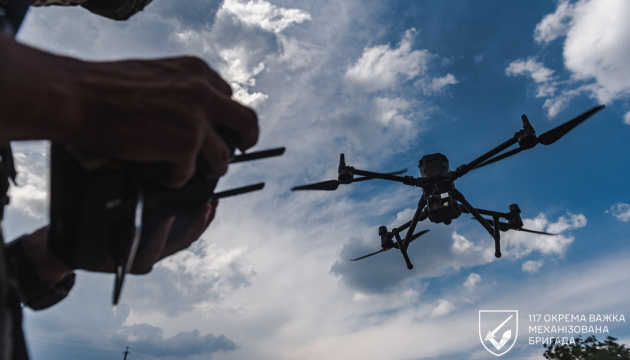
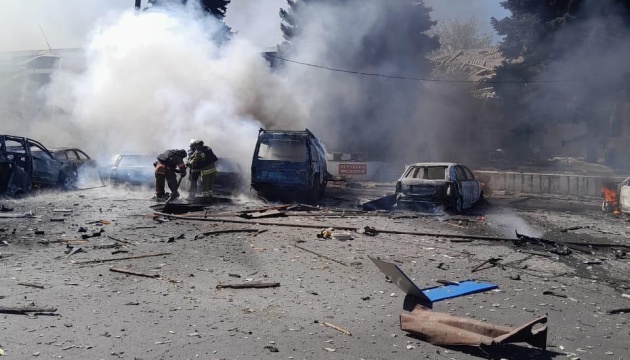
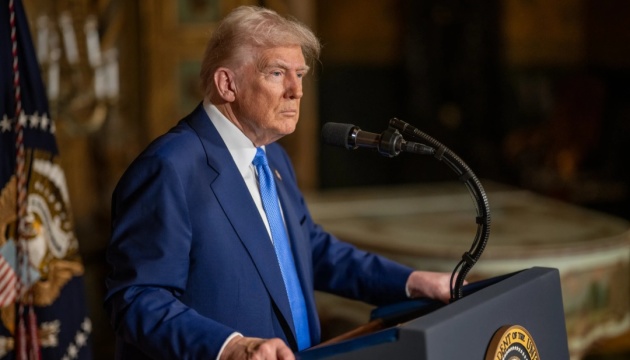
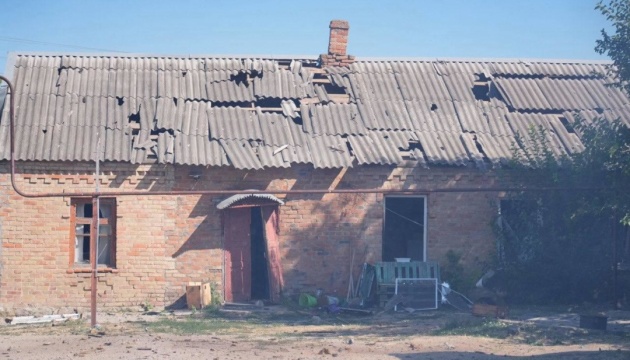
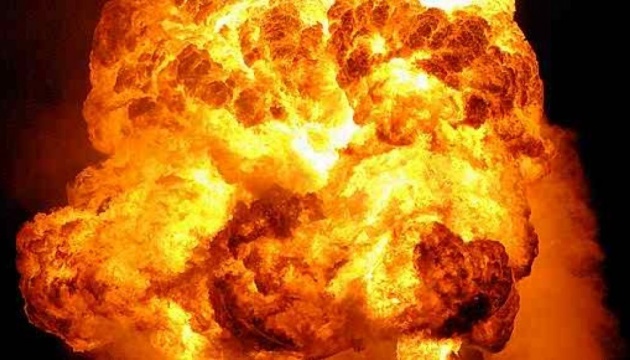
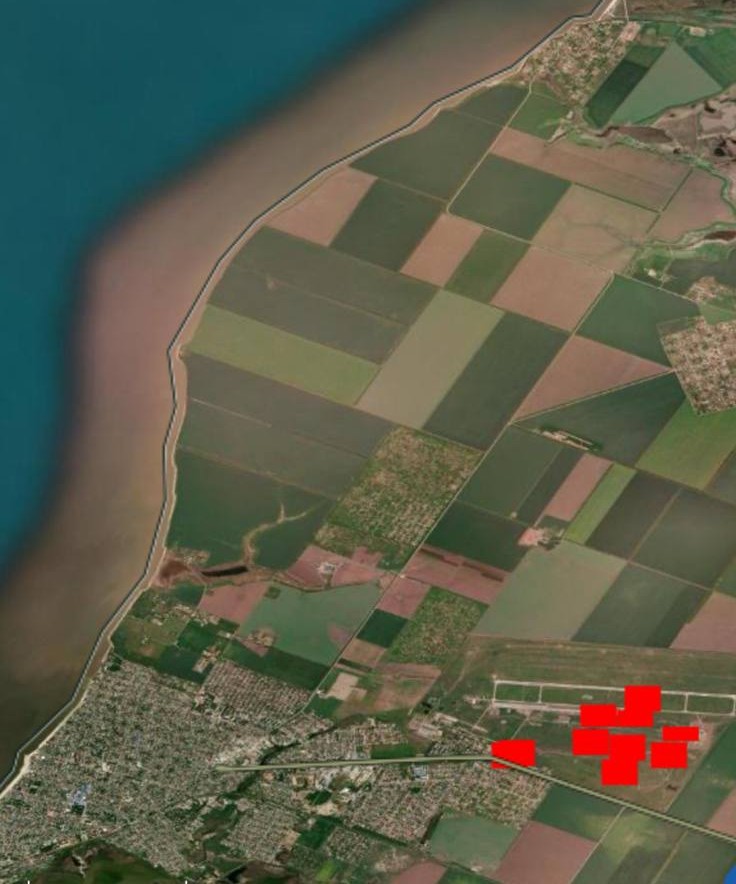
Ukrainian Security Service (SBU) drones struck a military airfield storing Iranian-made “Shahed” drones in Primorsko-Akhtarsk, Krasnodar Oblast, during the night of 2 August, the SBU press service reported.
The SBU said that the Primorsko-Akhtarsk military airfield became the first target for long-range UAVs. “Storage and launch sites for Shaheds that attack Ukraine were hit on its territory,” the service announced. Fires broke out in the airfield area following the drone strikes.
A second target was the Elektroprilad plant in Penza city, with the Ukrainian Armed Forces General Staff confirming the strike. The facility produces equipment for the Russian military-industrial complex, manufacturing gear for digital networks in military command systems, aviation devices, armored vehicles, ships, and spacecraft, according to the SBU.
“SBU drones successfully hit the target, with smoke observed in the explosion area,” the security service reported regarding the Penza strike.
The attacks represent a continuation of Ukrainian strikes on Russian military infrastructure. On 31 July, drones had previously targeted a radio plant in Penza, with the SBU later confirming responsibility for that operation as well.
The coordinated strikes demonstrate Ukraine’s expanding capability to conduct long-range operations against military targets deep within Russian territory, specifically targeting facilities involved in producing or storing weapons used against Ukrainian cities.
Multiple Russian oblasts reported explosions and fires at industrial facilities during overnight drone attacks on 2 August, with air defense systems activated across several areas, according to Russian Telegram channels.
Samara Oblast Governor Vyacheslav Fedorishchev confirmed strikes on Novokuybyshevsk. Social media footage showed a large fire at what appeared to be the Novokuybyshevsk Oil Refinery.
Witnesses reported loud explosions near Dyagilevo airfield in Ryazan Oblast. Another oil refinery in Ryazan city was reportedly struck.
Residents of Lipetsk and Voronezh oblasts also reported UAV attacks and air defense activity during the night.
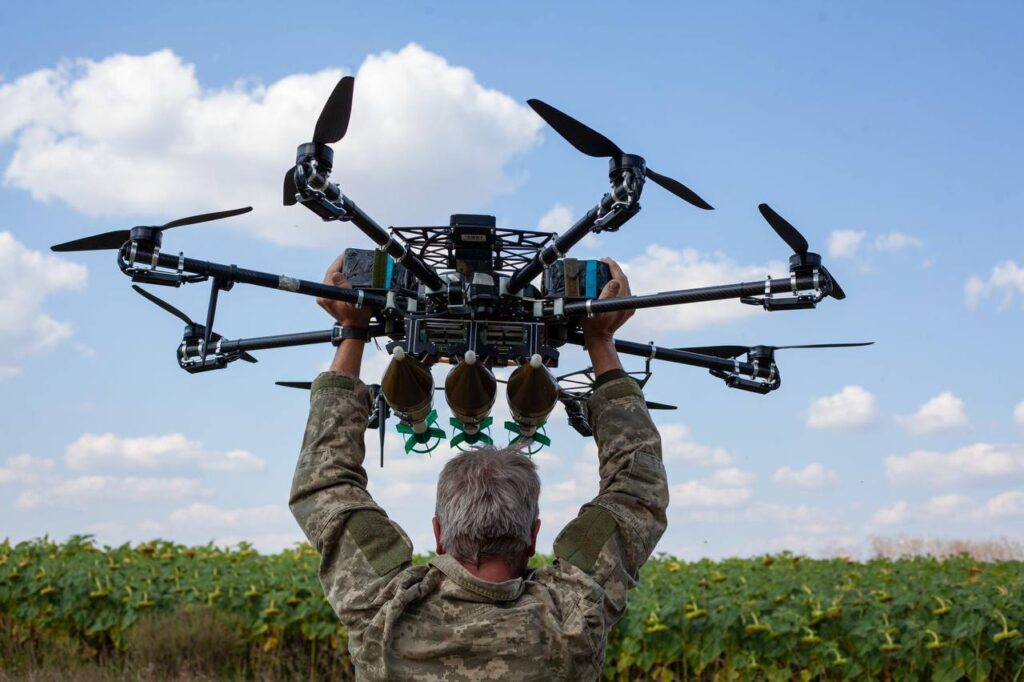
Ukraine’s Ministry of Defence has redistributed 8 billion hryvnias ($192 million) for urgent needs of unmanned units, following a decision by the Supreme Commander-in-Chief’s headquarters, Defense Minister Denys Shmyhal said.
The funding will support military units of the Armed Forces of Ukraine involved in the “Drone Line” project and strengthen unmanned systems in newly formed units.
“This will allow for immediate financing of urgent needs of such units as ‘Madyar’s Birds’, K2, ‘Rarog’, ‘Achilles’, ‘Nemesis’, ‘Black Forest’,” Shmyhal said. These units demonstrated high effectiveness, destroying 22,700 Russian targets in the past month alone.
The government allocated an additional 1 billion hryvnias ($24 mn) for anti-drone protection of evacuation and logistics routes.
The funding comes as part of broader defense budget increases. On 31 July, the Verkhovna Rada approved amendments to the state budget, increasing defense sector expenditures by 412.3 billion hryvnias ($10 bn). Of this amount, 115 billion hryvnias ($3 bn) will fund monetary support for servicemembers across all Defense Forces.
Ukraine’s Defense Minister said earlier this week that the country is very close to obtaining its own ballistic missiles. The announcement came after former Deputy Defense Minister Anatoliy Klochko said in June that Ukrainians would soon hear “more concrete statements” about Ukrainian ballistics, as the country had made “serious progress” on the issue.

Ukrainian President Volodymyr Zelenskyy has posthumously awarded journalist Victoria Roshchyna with the Order of Freedom, according to a presidential decree.
The document states the award recognizes her “civic courage, patriotism, selfless defense of sovereignty and independence of the Ukrainian state, constitutional rights and human freedoms.”
“Today we honor Victoria Roshchyna posthumously. She is awarded the Order of Freedom. For unwavering faith that freedom will overcome everything. Honor and bright memory to Victoria Roshchyna,” Zelenskyy wrote.
Roshchyna disappeared on temporarily occupied territories on 3 August 2023. Russia first confirmed holding her in captivity only in May 2024. This marked her second abduction by Russian forces – she had previously been kidnapped in March 2022 but was released after ten days.
News of her death emerged on 10 October 2024, when Russian officials informed her father Volodymyr, with Ukrainian authorities later confirming the information.
The Media Initiative for Human Rights reported that Roshchyna was held in at least two detention facilities: correctional colony №77 in Berdiansk and detention center №2 in Taganrog, Russia. The Taganrog facility is known as “one of the most brutal detention places for Ukrainians on Russian territory,” according to the organization.
Roshchyna’s body was returned to Ukraine in late February, though this information was first made public on 24 April. Journalists learned that she was initially held in Enerhodar and later transferred to Melitopol.
A cellmate described finding multiple scars on Roshchyna’s arms and legs, as well as knife wounds. The journalist told her she had been tortured with electricity, after which “she was all blue,” according to the cellmate’s account. Roshchyna later began losing weight dramatically, refusing food until she weighed around 30 kilograms.

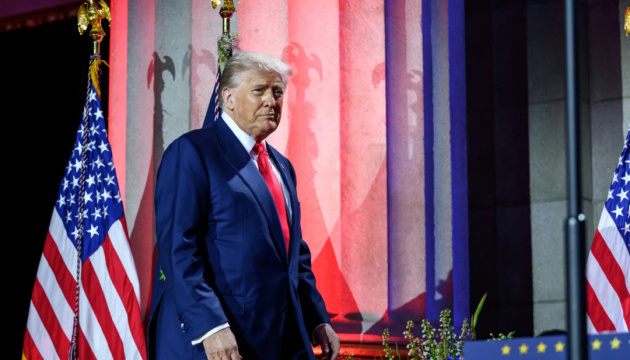

A group of Ukrainian children has been evacuated from Russian-occupied territories and brought to safety in government-controlled Ukraine, according to organizations Bring Kids Back UA and Save Ukraine.
The children endured systematic persecution for maintaining their Ukrainian identity while living under occupation.
“15-year-old Maria courageously defended her Ukrainian identity – she wore vyshyvanka to Russian school, argued with teachers about Ukraine. For this, classmates called her ‘ukropka,’ bullied and beat her, and teachers wrote denunciations and threatened her mother with deprivation of parental rights,” Bring Kids Back UA reported.
Four-year-old Milana and eight-year-old Sashko lived in occupied territories with their mother and grandmother. The women faced constant threats that children would be taken away if they refused to attend Russian schools. Authorities forced the children’s mother to obtain Russian documents while subjecting the grandmother to polygraph interrogation. Milana, who has a disability requiring medication, suffered as her family struggled to find necessary medicines under occupation.
Another evacuated teenager faced interrogation for online activity. “15-year-old Lina was interrogated for 6 hours straight for a pro-Ukrainian comment on social media, had her phone confiscated and was threatened with arrest by local ‘police.’ After that, the girl was afraid that she was being watched and that one day she would be forcibly sent to a so-called Russian ‘reeducation camp,'” the rescue organization wrote.
Seventeen-year-old Semen fled occupation to avoid conscription into Russian forces. He decided not to wait until adulthood after witnessing classmates forced into Russian military service despite their young age. Military commissariat representatives had already visited Semen’s home, threatening fines and physical violence for failing to appear when summoned.
The evacuation represents part of ongoing efforts to return Ukrainian children from occupied territories, where previous groups have been rescued despite facing pressure while studying online in Ukrainian schools.
Approximately 1.6 million Ukrainian children live under Russian occupation as of 2024, with many subjected to education under Russian standards and indoctrination programs. Russia continues to forcibly deport and militarize children from occupied territories, including sending tens of thousands to summer camps and preparing them for future service in the Russian military, which violates international law.
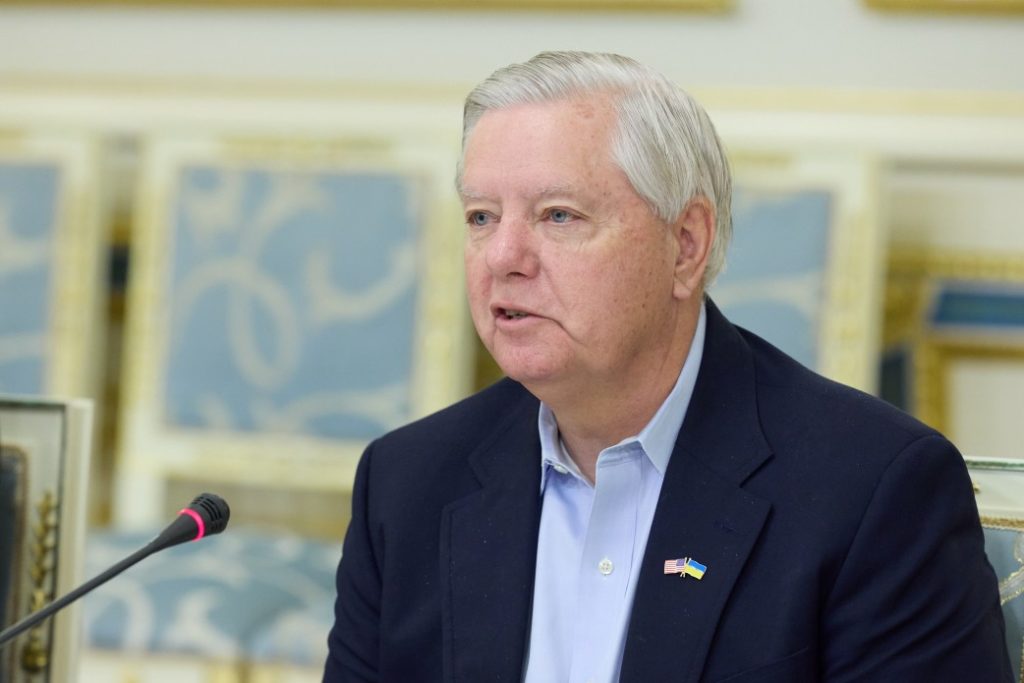
Republican Senator Lindsey Graham issued a warning to Russia regarding potential escalation, responding to threats made by Dmitry Medvedev against the United States.
Graham wrote on social media platform X that President Donald Trump does not seek conflict but stands ready for decisive action if necessary.
“To my friends in Russia: President Trump seeks peace not conflict. However, please understand that he is not Obama, he is not Biden, and he will not be trifled with. You are overplaying your hand,” Graham wrote.
The US President previously announced on Truth Social that he ordered the deployment of two nuclear submarines to appropriate regions following provocative statements by Deputy Chairman of Russia’s Security Council Dmitry Medvedev.
Trump explained that he “was forced to do this” to protect the American people.
Earlier, Medvedev published a post mentioning the Soviet automatic nuclear strike system known as “Dead Hand” and called on Trump to “remember his favorite zombie movies.”
Previously, Medvedev claimed that Trump “is playing a game of ultimatums with Russia.” He added that “every new ultimatum is a threat and a step toward war.”
President Donald Trump has expressed earlier growing frustration with Russia’s continued attacks on Ukraine. Trump, who initially adopted a more conciliatory approach toward Moscow while attempting to end the three-year war, has now threatened to impose tariffs and other measures if Russia shows no progress toward ending the war by 8 August.
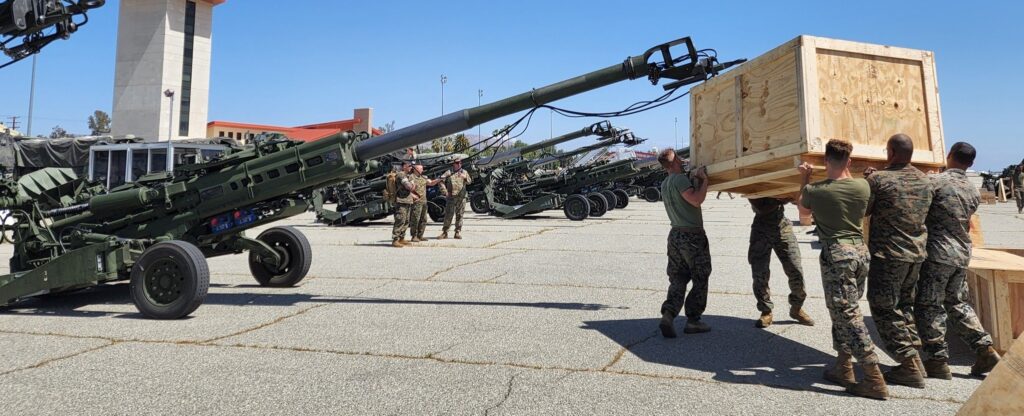
The United States and NATO are developing a novel financing mechanism that would allow NATO countries to pay for American weapons transfers to Ukraine, Reuters reported on 31 July, citing three sources.
The initiative comes as President Donald Trump has expressed growing frustration with Russia’s continued attacks on Ukraine. Trump, who initially adopted a more conciliatory approach toward Moscow while attempting to end the three-year war, has now threatened to impose tariffs and other measures if Russia shows no progress toward ending the war by 8 August.
“The president said last month the US would supply weapons to Ukraine, paid for by European allies, but did not indicate how this would be done,” Reuters reported
The new mechanism centers on the Priority Ukraine Requirements List (PURL), a catalog of American weapons systems. Under the proposed structure, Ukraine would prioritize needed weapons in tranches of approximately $500 million each. NATO allies, coordinated by Secretary General Mark Rutte, would then negotiate among themselves to determine funding responsibilities for specific items.
“That is the starting point, and it’s an ambitious target that we’re working towards. We’re currently on that trajectory. We support the ambition. We need that sort of volume,” a European official told Reuters, speaking on condition of anonymity.
The mechanism aims to deliver $10 billion worth of arms to Ukraine, though the timeframe remains unclear. A senior NATO military official described the initiative as “a voluntary effort coordinated by NATO that all allies are encouraged to take part in.”
The system includes a NATO holding account where allies can deposit funds for weapons purchases, subject to approval by NATO’s top military commander. According to a US official, money would be transferred to a US-held account, possibly at the Treasury Department, or to an escrow fund, though the exact structure remains under development.
For NATO countries choosing to donate weapons directly, the mechanism would allow them to bypass lengthy US arms sales procedures when replenishing their own stockpiles, Reuters reports.
The new system would operate alongside existing US efforts under the Presidential Drawdown Authority, which allows the president to transfer weapons from current American stockpiles to assist allies during emergencies.
At least one weapons tranche is currently under negotiation through the new mechanism, according to two sources, though it remains unclear whether any funds have been transferred yet.
Trump’s Republican allies in Congress have introduced the PEACE Act, legislation designed to create a Treasury Department fund where allies could deposit money to pay for replenishing US military equipment donated to Ukraine.
Ukraine’s requirements remain consistent with previous months: air defenses, interceptors, missile systems, rockets, and artillery. The most recent statement of needs came during a 21 July video conference of Ukraine’s allies in the Ramstein group, now led by Britain and Germany.
Russian forces continue their gradual advance against Ukraine and currently control approximately one-fifth of Ukrainian territory.
NATO headquarters in Brussels declined to comment on the mechanism. The White House, Pentagon, and Ukrainian embassy in Washington did not respond to Reuters’ requests for comment.

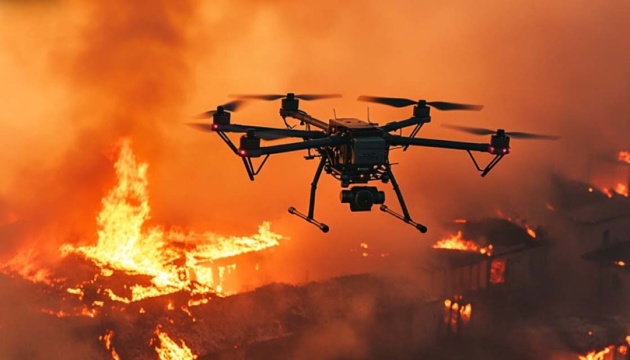
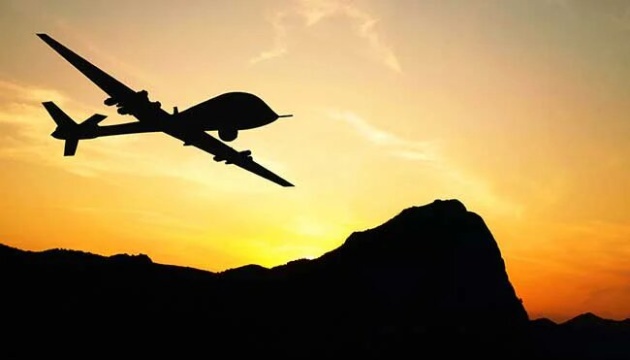

President Donald Trump ordered two nuclear submarines to be strategically positioned in response to what he called “highly provocative statements” from former Russian President Dmitry Medvedev NBC NewsCNN, escalating tensions between the nuclear superpowers on 1 August.
“I have ordered two Nuclear Submarines to be positioned in the appropriate regions, just in case these foolish and inflammatory statements are more than just that,” Trump wrote on Truth Social. “Words are very important, and can often lead to unintended consequences, I hope this will not be one of those instances.”
The submarine deployment came after Medvedev made reference to Russia’s Soviet-era automatic, retaliatory nuclear strike capabilities on 31 July, after Trump told Medvedev to “watch his words.”
The exchange began after Medvedev said that “each new ultimatum” that Trump makes toward Russia in pressuring an end to the war in Ukraine.
Trump had previously warned of new sanctions against Moscow if Russia did not demonstrate progress in ending the Ukraine war within 10 days.

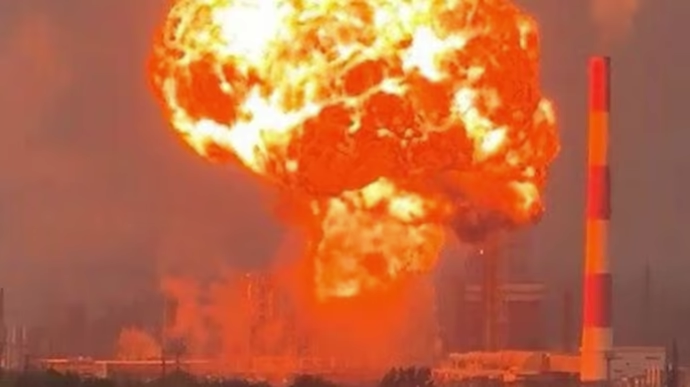
Multiple Russian oblasts reported explosions and fires at industrial facilities during overnight drone attacks on 2 August, with air defense systems activated across several areas, according to Russian Telegram channels.
Samara Oblast Governor Vyacheslav Fedorishchev confirmed strikes on Novokuybyshevsk. Social media footage showed a large fire at what appeared to be the Novokuybyshevsk Oil Refinery, with sounds resembling drone operations and air defense systems audible in the videos.
The governor also announced temporary restrictions on mobile internet in the oblast and suspended operations at Samara airport following the attacks.
Defense-related facilities in Penza Oblast also came under attack. Drones reportedly struck JSC Production Association “Elektropribor,” a company specializing in control elements for Russian missile systems and communications equipment. The nearby AT “Radio Plant,” Russia’s sole defense facility producing air defense command centers, was likely also hit, according to reports.
Witnesses reported loud explosions near Dyagilevo airfield in Ryazan Oblast. Another oil refinery in Ryazan city was reportedly struck, with local social media publishing eyewitness videos showing a column of fire. Regional authorities confirmed drone attacks on a local enterprise without specifying which facility was targeted.
Residents of Lipetsk and Voronezh oblasts also reported UAV attacks and air defense activity during the night.
JSC Kuibyshev Oil Refinery produces motor fuels including Euro-5 standard gasoline and diesel fuel, along with dozens of other petroleum products in market demand.
The attacks followed similar overnight explosions in several cities of temporarily occupied Crimea on 1-2 August, after which occupying authorities closed the Crimean Bridge to vehicle traffic.
